Conus geographus Linnaeus, 1758
Geography cone,
129mm
Conus
geographus is the largest of the fish-eating cone shells and is also the
most dangerous. Its venom has adapted to become powerful enough to quickly stun
or kill a prey fish. It wouldn't do the cone much good if the fish were stung
and escaped, only to die somewhere else. In addition to having highly virulent
venom, it also has an aggressive attitude. While most cone shells will retract
within the shell when disturbed and show little or no inclination to sting humans,
Conus geographus will frequently start waving about its stinger looking
for a victim when it is picked up. You have to watch this one carefully. They
live in a variety of seaward reef and lagoon habitats, and like many other cones,
are nocturnally active.
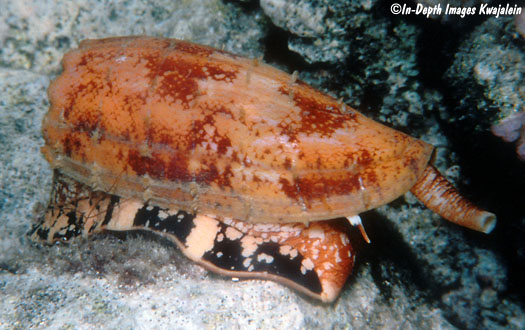
The closeup of the anterior end
below shows the siphon at right. Just to the left of the siphon barely visible
peaking out from beneath the shell is the mouth, and the white tentacle to the
left of that is a sensory tentacle with a black eye at the junction between
white and brown.
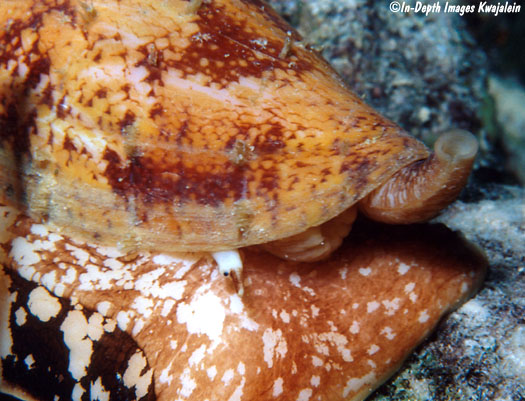
A young specimen has a shell with
a pattern of tent markings, similar to that of one of the tented cones such
as Conus textile. I
suspect that deaths reportedly caused by C. textile may actually have
been one of these.
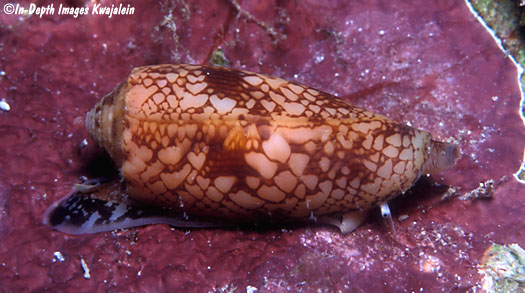
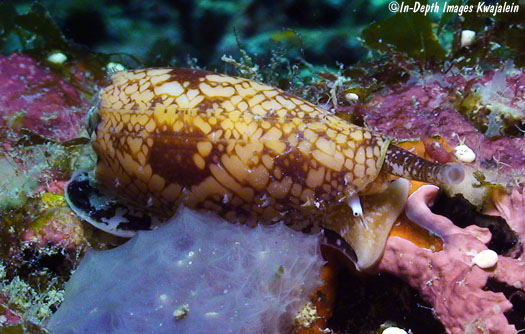
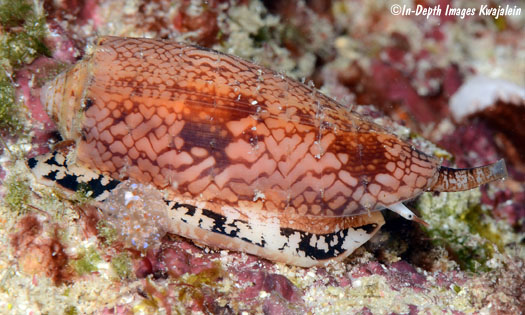
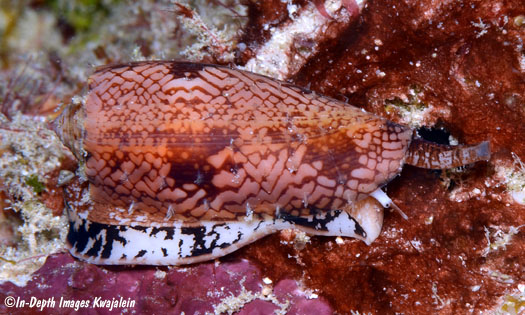
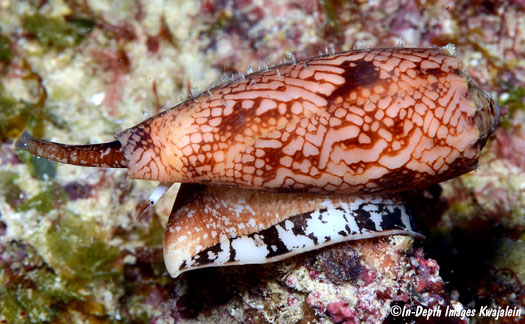
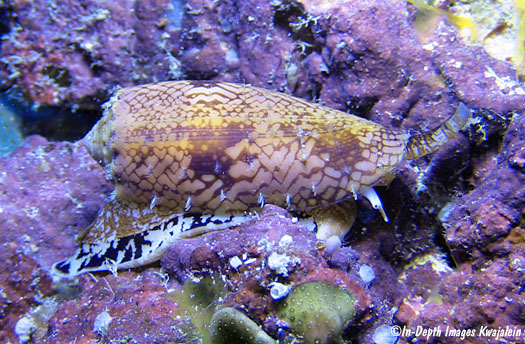
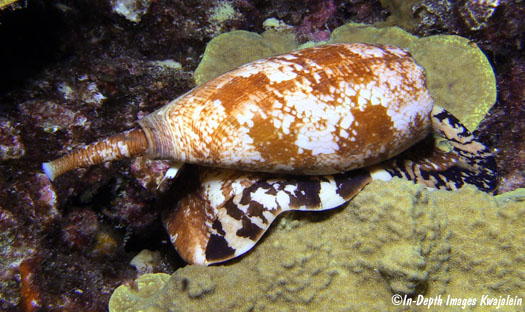
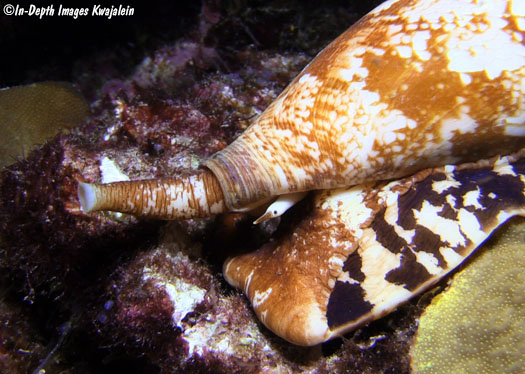
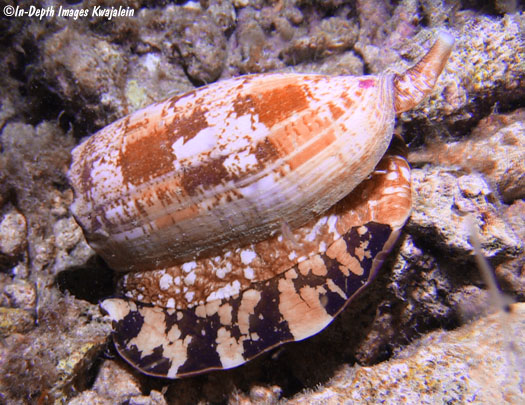
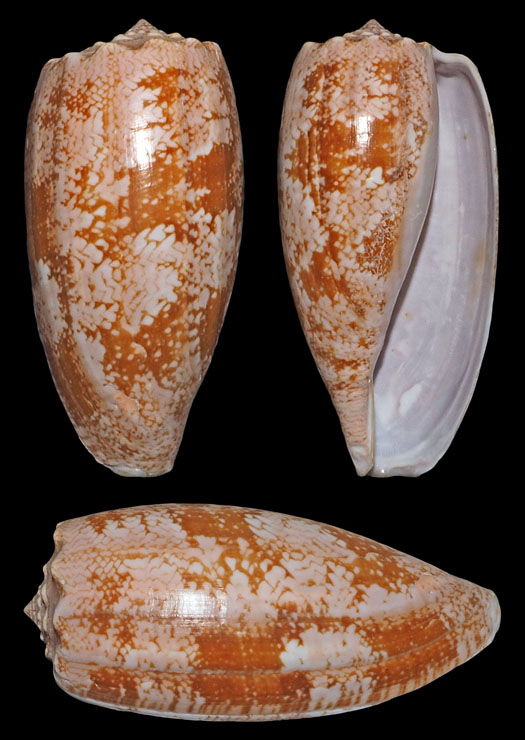
Created 4 July 2009
Updated 12 March 2020
Return to cones
Kwajalein Underwater home












